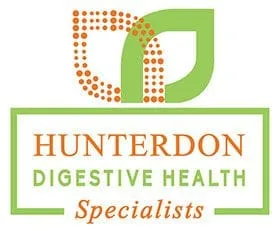Gastroesophageal reflux (or acid reflux) occurs when contents from your stomach reflux back up into your esophagus or mouth.
When we eat, food is carried from the mouth to the stomach through a muscular, tube called the esophagus. At the lower end of the esophagus there is a circular ring of muscular tissue called the lower esophageal sphincter (or LES). This muscle relaxes after you swallow to allow food to enter the stomach. Once the food enters your stomach, it then closes to prevent food and acid from backing up into your esophagus.
If the LES becomes weak or is relaxed because your stomach is over-distended, liquid in the stomach can reflux back up into your esophagus. This happens occasionally in all of us and typically does not cause any symptoms.
Acid reflux becomes Gastroesophageal Reflux Disease (or GERD) when reflux symptoms become bothersome or damage the esophagus.
The amount of reflux that causes GERD will vary from person to person. Damage to your esophagus is more likely to occur when:
Reflux is frequent
The contents are very acidic, or
When reflux sits in your esophagus for an extended period of time.
What are the symptoms of GERD?
Heartburn or a burning sensation in the throat or chest
Acid taste in the back of the throat
Regurgitation of foods or liquids
Indigestion
Nausea and/or vomiting
Hoarse voice
Sore throat
Chronic cough or throat clearing
The sensation of a lump in your throat
Dental disease
How is GERD diagnosed?
*It is important to rule out potentially life-threatening conditions that could be causing your symptoms. Chest pain can be a symptom of cardiac or pulmonary disease. This should always be evaluated promptly and urgently by a qualified clinician.
*A comprehensive history and physical exam will help our medical staff diagnose your condition.
Acid reflux is often diagnosed based on your symptoms and an appropriate response to a trial of medication. If you have symptoms of acid reflux but no evidence of complications or more serious disease, a trial of lifestyle modifications and medication may be recommended prior to more invasive testing.
Specific testing may be required when the diagnosis is unclear, or if you have more serious signs or symptoms.
Upper endoscopy (or EGD) is a procedure performed under anesthesia where a small, flexible tube is passed into your esophagus, stomach and the first part of your small intestine (or duodenum) to assess for disease and changes in the lining of your esophagus, stomach, or duodenum. Biopsies can be taken during the procedure to assist with the diagnosis.
A 24-hour esophageal pH study measures the acidity in your esophagus. A thin tube with a small device that measures the pH in your esophagus is inserted through your nose and into your esophagus. It is left in your esophagus for 24 hours. You’ll keep a diary of your symptoms. Afterwards, data will be analyzed to determine if the frequency of your reflux and pH readings correlate with your symptoms.
Esophageal manometry is used to help determine if your lower esophageal sphincter (or LES) is functioning properly. This test involves swallowing a tube that measures the muscular contractions of your esophagus. It is usually reserved for cases of reflux unresponsive or refractory to typical treatments.
What are the complications associated with GERD?
The vast majority of patients with GERD will NOT develop any serious complications, especially if it’s treated appropriately; however, serious complications can occur. Complications include:
Peptic Ulcer Disease (PUD) or ulcers of the esophagus or stomach.
Stricture, or a narrowing of the lining of the esophagus, caused by acid damage that scars and narrows the esophagus.
Lung and throat problems — If acid is refluxed into the throat, the vocal cords can become inflamed and damaged, resulting in hoarseness, sore throat and cough. Acid inhaled into the lungs can result in aspiration pneumonia and permanent lung damage.
Barrett's esophagus occurs when cells that normally line the lower esophagus are replaced with cells found in the stomach and intestines as a result of chronic acid exposure. Barrett’s esophagus increases your risk for developing esophageal cancer. As a result, people with Barrett's esophagus will require routine surveillance upper endoscopy to evaluate for changes in the lining of the esophagus suggestive of cancer.
Esophageal cancer. The 2 main types of esophageal cancer are adenocarcinoma and squamous cell carcinoma. Barrett’s esophagus increases your risk for developing adenocarcinoma.
What dietary and lifestyle modifications can help my symptoms?
Lose excess weight
Elevate the head of your bed
Avoid food triggers such as spicy, acidic, and fatty foods, citrus-based foods and tomato-based foods, chocolate and peppermint
Avoid excessive caffeine
Avoid alcohol
Stop smoking
Avoid foods that relax the lower esophageal sphincter and promote acid reflux (ex. peppermint and caffeine).
Avoid eating late at night; avoid eating 3 hours prior to bedtime.
Avoid tight fitting clothing
Chew gum or use oral lozenges to help to clear stomach acid from the esophagus.
